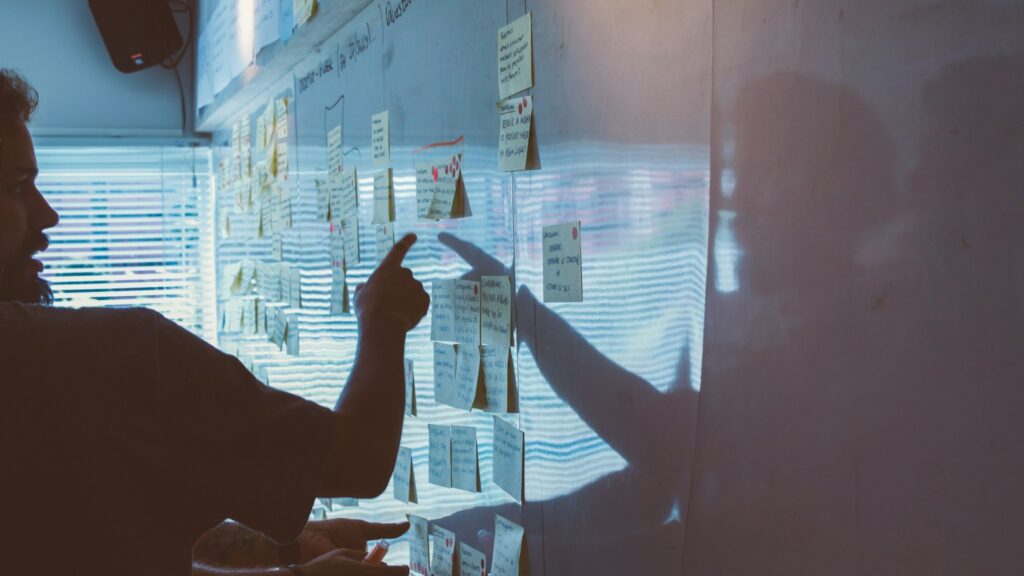Scaling a leadership programme without losing personalisation, emotional connection or operational excellence is no small feat. But it’s exactly what many L&D teams are now being asked to do: deliver more, to more people, with fewer resources, without compromising quality or engagement.
Uncovering how this works in practice, this article draws insights from the real-world rollout of a global leadership programme. Donna Verdi, Head of Learning and Talent Development at Kroll and Julie Havard, Head of Global Partnerships at LSP Leadership, outline the design decisions, leadership principles and ways of working that made the difference – from inception to legacy.
The challenge: Scaling without compromising quality
Modern L&D teams are under growing pressure to deliver fast, globally, and with real impact, often with leaner teams and tighter budgets. Success depends not just on content but on the ability to scale without losing relevance, depth or connection.
The ambition of this project was clear: build a leadership development programme that would strengthen succession pipelines, support career growth, and drive cultural consistency at scale without compromising quality.
What made the difference was mindset. We weren’t looking for an off-the-shelf course or a slick delivery schedule. We wanted to build capability, something meaningful, lasting, and truly embedded in the business.
To help us succeed, we partnered with LSP Leadership (LSP) to support us with working across geographies and managing complexity without losing clarity or connection.
From the start, the scope definition was collaborative and iterative, reflecting the scale of ambition and the need to stay close to business priorities from the outset.
Establishing ways of working: Partnership and trust
Before creating any content, we focused on how we would work together. Clarity, trust and shared responsibility were the foundation.
Together, we co-designed an operating model that enabled confident delivery across regions, functions and timelines. With more than 20 internal stakeholders involved, the governance framework needed to be tight but also flexible enough to adapt.
Key elements included:
- Clear roles and scope across all partners and stakeholders.
- Regular, structured communication with defined escalation routes.
- Agile decision-making protocols, including pre-agreed response times.
- A shared project dashboard tracking milestones, risks and outcomes.
- Deliberate impact metrics measuring client, vendor and programme success.
- A phased project plan with contingency built in from the start.
Governance isn’t red tape, it’s the backbone of agility.
This clarity gave everyone confidence. It meant faster decisions, fewer surprises, and the ability to adapt without friction. The shared commitment to excellence made it feel less like vendor management and more like joint leadership.
Designing with purpose: Personalised, relevant and modular
At the heart of the programme was one guiding principle: relevance. Every element needed to resonate across regions, business units, and leadership levels.
To get there, programme sponsors, HR leaders and business representatives were actively involved from the start. Their role was more than advisory. They shaped priorities, challenged assumptions, and ensured the programme stayed anchored in the realities of the business.
LSP designed a modular framework that allowed for both consistency and flexibility. The structure supported global coherence, while the content flexed to meet the cultural and operational nuances of each region.
The programme included:
- Live interactive virtual sessions with senior executives, facilitators and leadership experts.
- Breakout groups and peer coaching to apply learning in context.
- Real-time case studies and simulations grounded in actual business challenges.
- HEAT experiences, where participants opted into stretch opportunities.
- Executive coaching to deepen personal insight and build momentum.
- Active sponsor engagement, ensuring visibility, reinforcement and support.
We built a global framework that flexed locally.
What made the difference was the attention to fit. Cultural nuances, learning preferences and business rhythms were all considered from the outset, creating a learning experience that felt close, not distant.
Real-time analytics guided responsive improvements throughout delivery. Minor course corrections became a mark of quality, not compromise.
Pilot testing: Learning before scaling
Rather than launching all at once, the programme began with carefully selected pilot cohorts drawn from different business functions and regions.
These early groups allowed for testing, listening and refining. Each pilot included not only delivery, but structured reflection.
Post-session listening exercises gathered insights across key dimensions:
- Content relevance and pacing.
- Facilitator and coach effectiveness.
- Participant engagement.
- Platform usability and accessibility.
- NPS scores and qualitative feedback.
Working side by side, we analysed the data, making rapid adjustments, and strengthening the experience before moving to full rollout.
Pilots weren’t a trial run, they were the foundation.
This iterative approach ensured that what scaled had already been validated. By the time the programme reached its full audience, it felt tested, trusted and ready.
Scaling with precision: Delivery, logistics and adaptability
Scaling globally goes further than simply reach, it’s about rhythm. The success of this programme rested on the ability to coordinate across time zones, cultures and business cycles without disrupting operations or diluting quality.
Key enablers included:
- Staggered delivery schedules aligned to time zones and operational peaks.
- Cohort design that encouraged regional diversity and peer learning.
- Robust technical setup to support seamless virtual and hybrid sessions.
- Tight logistical coordination across internal teams and external coaches.
- Real-time tracking and reporting, enabling responsive course adjustments.
Precision in logistics enabled freedom in learning.
As a result of this approach, facilitators, coaches and participants were able to focus fully on the experience, not the mechanics. That clarity allowed energy to flow where it mattered most: the learning.
Proving impact: Measuring what matters
From the start, success wasn’t measured by attendance or completion. It was measured by change, how people thought, acted and progressed as leaders.
Together, we established clear KPIs that captured more than output. We tracked momentum, behaviour shifts and business impact through a blend of data and insight.
What we saw:
- Excellent NPS scores and consistent session attendance.
- A marked rise in internal mobility, including applications for new roles, promotions and lateral moves.
- Tangible progress reports identifying trends, barriers and opportunities to strengthen future cohorts.
- Actionable recommendations supporting the wider talent and succession strategy.
We measured what mattered, then made it matter more.
Insight wasn’t the end, it became a tool for data-informed design tweaks, sponsor briefings, and post-programme coaching. The feedback loop stayed open, keeping momentum alive well beyond the final session.
Sustaining the shift: Learning that lasts
As the first cohorts reached the end of their journey, the client chose to mark the moment, celebrating with recognition events, senior leader reflections and peer stories that reinforced the impact.
But the learning didn’t stop there. This programme was never just an event. It was designed as part of a broader movement to embed leadership into the flow of work.
Ongoing elements included:
- One-to-one executive coaching to embed learning and further stretch participants.
- Curated digital learning pathways for continued skill building and access to resources.
- Sponsor engagement to support alumni and maintain visibility.
- Integration into career pathways and succession planning to embed leadership development structurally.
The programme concluded, but what it started, a shared language, a leadership mindset, a culture shift, they all continued to grow.
Final reflection: A partnership model for modern L&D
Delivering impactful development at scale isn’t just about content, logistics or reach. It’s about trust, shared ownership and strategic alignment.
In an environment where agility, personalisation and measurable outcomes are essential, this case study highlights how a model built on partnership, precision and purpose is essential for modern L&D.





